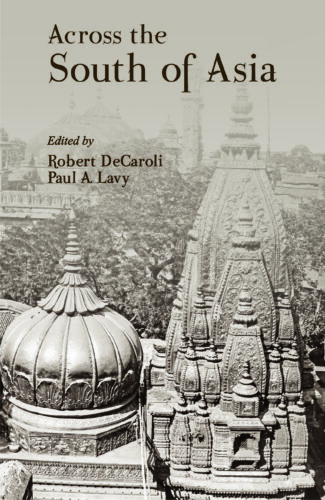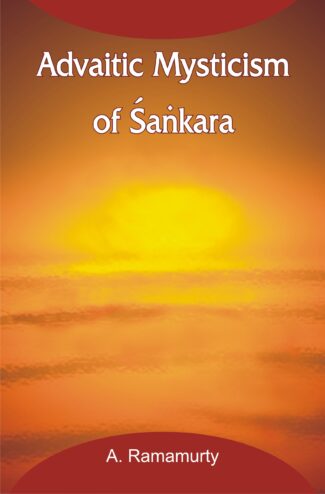Showing 21–30 of 1094 results

This collection of essays takes a broad view of South Asian art and culture by providing a wide geographic and chronological scope. Each essay on its own constitutes a solid, well-grounded academic study, but taken collectively they provide a wide and inclusive view of issues of art and material culture that span the region and invite comparison.
All too often, modern scholarship limits its scope according to the boundaries of contemporary nations and current geopolitical borders. Academic expertise frequently ties itself artificially to these pre-defined spaces and in so doing often does a disservice to the past. It is no great revelation to point out that people of the past defined the limits of their political and cultural reach in ways that were very different from those found on modern maps. Ancient rulers, merchants, and priests understood the reach of their influence and defined foreignness in ways that would be deeply unfamiliar to those only knowledgeable of the modern world. Yet, despite the well-recognized truth in these observations, it is still relatively rare for scholars to research in ways that transcend modern boundaries.
This collection of essays invites readers to take a broad view of South Asian art and culture by providing a wide geographic and chronological scope. The articles are united only by their focus on art historical and archaeological concerns and their concentration on South Asia ranging from Afghanistan to the island kingdoms of Indonesia. Each essay on its own constitutes a solid, well-grounded academic study, but taken collectively they provide a wide and inclusive view of issues of art and material culture that span the region and invite comparison.
By taking this approach, this volume is a tribute to Prof. Robert L. Brown whose lifetime of teaching has always emphasized connections as well as differences. Over his professional career, he has trained a large cohort of students (many of whom are contributors to this volume) whose expertise truly does reach across the south of Asia.
This book, a work on human doing, analyses and applies three central aspects of human life – Action, Freedom and Responsibility – in the wide spectrum of the Philosophy of Mind. Reflections on these issues and their interconnections have a significant effect on the Philosophy of Value and application of ethical theories in practical life. This book even reconstructs the conceptual connection between action and freedom, on the one hand, and that between freedom and responsibility, on the other.
It also puts the concepts of freedom and determinism to critical test and reinterprets them from different angles and perspectives. The conventional doctrine of karma, based on the teachings of the Bhagavadgātā, is relieved from its usual deterministic presentation and a logically reasonable explanation is offered.
Human actions and human agency are central concepts in the philosophy of mind and action. Free will and responsibility constitute the bedrock of the moral life of the human agents and the book pinpoints that freedom is meant to undertake the goal-oriented actions. It is, therefore, focused on the enquiry into the various aspects of philosophy of mind, as well as the philosophy of value.

Presenting the original text of the Aditya Hrdayam, a canto chapter dedicated to the Sun God in Adikavi Valmikis Srimadramayanam, along with its Roman transliteration and English translation, the book offers a commentary by Swami Tattvavidananda Saraswati unraveling the power and mystique of the Sun as explained in the Aditya Hrdayam.
The ancient Indian tradition and literature accords a supreme place to the Sun in the order of divinities, revering and worshipping it as the life-force of the Universe and the highest Reality. The commentary by Swami Tattvavidananda Saraswati in this volume comes as an attempt to unravel the power and mystique of the Sun as explained in the Aditya Hrdayam, a small canto chapter offering obeisance to the Sun God in the immortal epic, Srimadramayanam of Adikavi Valmiki. The book presents the original Sanskrit mantras of the Aditya Hrdayam along with their Roman transliteration and lucid English translation. The verses are accompanied by detailed annotations that describe every term, concept and idea with great clarity. The commentary, easy to follow and fluent in flow, explores the secret of the eternal stotra, Aditya Hrdayam conveyed by Sage Agastya to Lord Rama using which the latter emerged victorious over Ravana. Aditya Hrdayam is hailed as one of the greatest tributes to the Sun by our ancient sages that provides insights into the importance of the Sun as the creator and sustainer of the Universe, the ultimate source of all wealth. The commentary involves copious references to Taittiriya Samhita, Taittiriya Aranyaka, Taittiriya Upanisad, Chandogya Upanisad, Srimadbhagavadgita, etc. , which make it all the more comprehensive and scholarly.

The book analyses the concepts of Atman, Brahman, and the World, highlighting Sankaras advaitism. In the context of Sankaras philosophy vis-a-vis the Upanisads, it is perhaps the first to explore the meaning and functions of language.
For over a millennium, Shankaras advaitism: non-dualism, has been exposed to extensive discussion, debate, and even polemic. In modern times, it has often been viewed as a system of metaphysical thought, involving a set of several subtle, though interrelated, doctrines which all have the Upanishads at their base. But, wittingly or unwittingly, modern theoreticians/scholars tend to gloss over Shankaras acumen as a philosophical analyst though his interpretations of the Upanishadic writings have indisputably shown his uncommon, rather unrivalled, genius for logic and meticulous philosophical analysis. Professor Ramamurtys work is, thus, a departure from run-of-the-mill studies attempting, as it does, an indepth conceptual analysis of advaita vedanta. The book does not just present advaita as a system of metaphysical thought. It is essentially an off-beat effort seeking to philosophically analyse the concepts of Atman, Brahman, and the World which not only count among the fundamental concepts in the philosophic thought of the Upanishads, but also help capture the true meaning, profoundity, richness and beauty of Shankaras advaita itself. Also, in the specific contexts of Shankaras philosophy vis-a-vis the Upanishadic texts, Professor Ramamurty tries to explore, perhaps for the first time, the meaning and functions of language and the problem that stem from it. Highlighting Shankaras advaitism: his insistence on the oneness of Brahman, the book offers a unique philosophic representation of the Upanishadic vision, which the scholars of classical Indian philosophy and discerning readers would love to share alike.

The book analyses the concepts of Atman, Brahman, and the World, highlighting Sankaras advaitism. In the context of Sankaras philosophy vis-a-vis the Upanisads, it is perhaps the first to explore the meaning and functions of language.
For over a millennium, Shankaras advaitism: non-dualism, has been exposed to extensive discussion, debate, and even polemic. In modern times, it has often been viewed as a system of metaphysical thought, involving a set of several subtle, though interrelated, doctrines which all have the Upanishads at their base. But, wittingly or unwittingly, modern theoreticians/scholars tend to gloss over Shankaras acumen as a philosophical analyst though his interpretations of the Upanishadic writings have indisputably shown his uncommon, rather unrivalled, genius for logic and meticulous philosophical analysis. Professor Ramamurtys work is, thus, a departure from run-of-the-mill studies attempting, as it does, an indepth conceptual analysis of advaita vedanta. The book does not just present advaita as a system of metaphysical thought. It is essentially an off-beat effort seeking to philosophically analyse the concepts of Atman, Brahman, and the World which not only count among the fundamental concepts in the philosophic thought of the Upanishads, but also help capture the true meaning, profoundity, richness and beauty of Shankaras advaita itself. Also, in the specific contexts of Shankaras philosophy vis-a-vis the Upanishadic texts, Professor Ramamurty tries to explore, perhaps for the first time, the meaning and functions of language and the problem that stem from it. Highlighting Shankaras advaitism: his insistence on the oneness of Brahman, the book offers a unique philosophic representation of the Upanishadic vision, which the scholars of classical Indian philosophy and discerning readers would love to share alike.

This volume centres around the formulations of the Advaita theory of monism on the basis of epistemological and logical analysis of knowledge in Adhyasa Bhashya. Thinkers like G.R. Malkani, K.S. Murty and G. Misra offer alternative perspectives in understanding the doctrine of the Upanishads, i.e. the Advaitavada of Shankara
Upanishads have been viewed differently by commentators down the centuries. Philosophers have brought in their native presuppositions in interpreting the Upanishadic texts. Advaitavada (monism) of Shankara stands out conspicuous among the varied interpretations of the Upanishads. Ontology, having been basic and fundamental, logic, epistemology and ethics are parasitic on it. Thinkers like G.R. Malkani, K.S. Murty and G. Misra offer alternative perspectives in understanding concepts and doctrines of the Upanishads.
This book undertakes the study of Advaitavada of Shankara in its depth and extension. It spells out the relative cogency of Malkanis understanding of Advaita Metaphysics and Methodology, Murtys Critique of Advaita (non-dualism) and Misras Philosophical Construction of Advaita from a linguistic perspective. This volume centres around the formulations of the Advaita theory of monism on the basis of epistemological and logical analysis of knowledge in Adhyasa Bhashya.
This title is a significant addition to the existing literature on Advaita philosophy and shall be of profound interest for scholars at large.

This book for the first time tries to understand the mystical dimension of Advaita. It is an attempt to understand comprehensively the meaning and significance of brahmanubhava or Brahman realization or experience as presented by Sankara in his writings. An attempt is also made to understand the significance of Advaitic mysticism by comparing it with Christian and Islamic mysticisms.
Brahman, according to the Upanishads and Shankara, the major exponent of the philosophy of the Upanishads known as Advaita, is not a metaphysical postulate meant to explain what is empirically experienced or the word. Brahman is absolutely real and is the inner reality or essence or self of all that is there, including ones self. Therefore it is known directly and immediately as the real or true nature of ones self. In the context of human reality Brahman is known as Atman, the true reality or nature of ones self. Direct and unmediated experience or realization of Brahman or brahmanubhava is the consummation of mans spiritual life as well as the supreme fulfilment of human existence.
This is an attempt to understand comprehensively, and in depth the meaning and significance of brahmanubhava as presented and discussed by Shankara in his commentaries on the Upanishads, Brama-Sutras and the Bhagavad-Gita, and in his other minor works, like Vivekacudamani, Aparokshanubhuti and Upadesha-Sahasri. Shankara is also known for his logical acumen and analytical approach to problems of philosophy. However, the mystical dimension of his philosophy which is also the reason for the lasting relevance and significance of his philosophy has not received the attention it deserves. May be this is the first of its kind in understanding and presenting systematically the Advaitic mysticism of Shankara in all its aspects. It is entirely based on the works of Shankara.
An attempt is also made in this book to understand the significance of Advaitic mysticism of Shankara in the light of its comparison with that of St. John of the Cross and Jalalud-Din Rumi, classical representatives of Christian and Islamic mysticisms.
The fascinating world of multiple Bharatas that this book introduces its readers with is that of a perennial tale discovered and created afresh at each juncture of time; at each moment of self-doubt and self-exploration; at each rejoicing of self-discovery and self-recovery. If one does not come across a seamless continuity here, one does not encounter apparent ruptures either. The Bharatas, as narrated here, present us with amazing diversity with palpable consubstantiality expressed in myriad forms and multiple hues; tradition belonging as much to its contemporaneity as to its past; belonging as much to the spokes as to the axle; centrifugal and centripetal at once; a tradition old and new at the same moment of time.
The book is based on the proceedings of a seven-day international conference organized by the Indira Gandhi National Centre for the Arts (IGNCA) on the living traditions of the Mahabharata in the year 2011. The conference explored the multiple tellings and retellings of the Mahabharata story as sung, danced, and celebrated in festivals, inscribed on to geographic landscapes, committed to memory as sacred genealogy, embodied in rituals, and sculpted in shrines and temples. The presentations ranged from issues of poetics and ethics to translations, adaptations, and variations to folk and tribal traditions as sung, recited, and performed. Rather than exploring the Mahabharata as a book or a singular narrative, these papers focus on the multi-tradition of the Mahabharata in all its multidimensionality, multiplicity, and above all, in its fluidity. The book would certainly interest the scholars engaged in the study of the living heritage of Indian epics, folklorists, indologists, and anthropologists.

The book opens with a fairly detailed essay on aesthetics as it is today, and explains the main ways in which contemporary aesthetic thinking is being done, the basic concepts of aesthetics and theories of art. A detailed account of the Indian theory of rasa is also included in the volume.
This work may well be expected to serve as an introduction to the study of aesthetics, suitable alike to the needs of our students and the general reader. A fair part of it deals with some of the more difficult concepts and problems one encounters in contemporary Western philosophical discourse on art. At the same time, the book is studded with illustrative references to contemporary aesthetic practice in India. This is true of almost every individual chapter; and the close is provided by a critical and comprehensive, yet intelligible account of the Indian theory of rasa, to which some eminent Western aestheticians, such as Susanne K. Langer and Harold Osborne, have referred admiringly in some of their basic writings.
What should make this book specially attractive to enquiring readers is its consistent attempt to reflect on teasing aesthetical questions with clarity.

This is decidedly the very first book of its kind. It explains in simple Hindi (or rather Hindustani) the basic concepts and problems of contemporary Western (philosophical) aesthetics with apt illustrative references not only to Hindi (and even Urdu) poetry, but to Hindustani Sangeet and English poetry.
After its attainment of Independence, India has witnessed the quickening of a new life in the field of art as well. Cultural exchanges between its various regions have shown a marked upswing, and reflection on cultural matters has also increased beyond expectations. Concurrently, in quite a few of our colleges and universities aesthetics has been included in the syllabi as an optional subject of study. Some books on this subject, mostly written in the traditional way, are surely available; but philosophical aesthetics, which is today regarded as a distinct intellectual achievement of the twentieth century, still remains largely neglected in the field of Indian scholarship. What is worse, a Hindi book on this form of aesthetics has never been attempted before the present work.
It is precisely this need which this book seeks to meet fairly. With an eye to facilitate understanding of the basic concepts and related problems of contemporary aesthetics, the author has taken pains to give appropriate references, as illustration, to Hindi, Urdu, and English poetry, and music. This should make the book useful to students of both philosophy and music.
Its language is simple Hindustani; and the manner of writing is free from needless ambiguities. Readers in general should therefore find it not only easy to follow, but interesting as well.